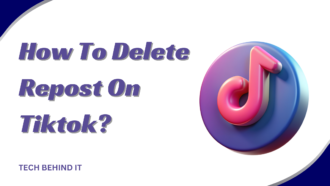How To Create an LMS From Scratch?
- 1 What Is a Learning Management System?
- 2 Steps For Creating an Effective LMS from Scratch
- 2.1 Research your plan and give it serious consideration
- 2.2 Select the proper tech stack
- 2.3 Prepare a learning management system plan and UI/UX
- 2.4 Commence by releasing the MVP of the learning management system
- 2.5 Distribution of the final iteration of the learning management system
- 3 Conclusion
- 4 FAQs
Learning is no longer limited to hefty books and laborious notes. Many instructors can use today’s powerful educational or e-learning portals. Educational material and training programs may be more easily managed with this. Learning Management System (LMS) is a software program used in schools, corporations, and other organizations. The main aim is to improve how training is managed and how people learn.
Today, we will know about how to create an LMS from scratch. This article by lms development company will give you every tip to make your Learning Management System the finest. So let’s get started!
Pros
- Full customization is possible when you customize the learning course.
- You can store employee (user) data in a system you own.
- Use the UI for employee and customer interface.
- You train LMS admins on your features and utilize them nonstop at your firm.
Cons
- You may stumble at shallow functionality.
- Integration issues and lack of support may occur.
- There may be no mobile-friendly LMS; thus, you must use a browser.
- The slight use of LMS in a company makes it cost-efficient.
What Is a Learning Management System?
Online learning management systems automate learning procedures. A learning management system lets teachers exchange and manage training programs. A learning management system (LMS) automates and simplifies the creation.
LMS Platform: Who Needs One?
Before wondering how to construct an LMS, consider its users. Centralizing and controlling training requires training management systems. Modern LMS allows various corporate usage possibilities, including:
- This seminar is for firms who need to attract users.
- Customer learning management improves product value.
- Manage partner training to optimize affiliate programs and increase counterparty value.
- An LMS for supplier learning provides a great chance to build productive partnerships and mutual understanding.
- Create centralized training content.
- Facilitate employee engagement utilizing digital learning to boost learning value.
- Employee development and retention. Using an LMS to manage staff development supports talent and trains and develops skills.
- Testing and certification of workers.
- The sales training system relies on LMS to give salespeople the necessary knowledge.
Steps For Creating an Effective LMS from Scratch
Research your plan and give it serious consideration
A failure is a distinct possibility during an unplanned LMS launch. Numerous organizations fail to consider research and development beforehand. In contrast, a meticulously organized LMS launch provides valuable insights into customer behavior. It also provides expectations, prevailing market trends, and more, all of which contribute to enhancing your LMS launch strategy.
Select the proper tech stack
The point that why a learning management system operates in the future depends on the web development stack you choose. Your database demands, and speed determines whether you choose MySQL, MongoDB, or PostgreSQL. Learning management systems use relational databases like MySQL and PostgreSQL. Both databases are quick, powerful, and compatible.
Prepare a learning management system plan and UI/UX
Construct a learning management system after choosing the web development stack. Also ensure the feature list is fair. You need a discovery phase with a strong team with good technical and communication skills. It is important to know how to ask the right questions to get all the information you need. You must also draw a final LMS diagram and estimate its cost. Once learning management system needs are defined, artists consider UI and UX. They’ll then create LMS mockups and wireframes for complex systems. After the designs are finished, developers will create a functional product.
Commence by releasing the MVP of the learning management system
It is preferable to release a “minimum viable product” before making any significant changes. The minimally practical product comprises the learning management system’s most vital components. Thus, during beta testing, users will have a comprehensive understanding of what an LMS entails. They can refine the remaining features in response to their feedback. Doing so will ensure that individuals have a positive experience. They will have thoughtfully evaluated and addressed their feedback while concurrently advancing product development.
Distribution of the final iteration of the learning management system
You now have complete knowledge and data regarding your learning management system’s minimum viable product (MVP). Now, all that remains is to implement the valuable feedback received. This will ultimately assist you in producing a product that is more beneficial for consumers.
Conclusion
Custom LMSs require a big team of engineers, designers, and project managers. Together with instructors and curriculum creators, the system may be optimized for students and faculty. Keep up with market trends and new technologies to keep your LMS competitive and current. A comprehensive learning management system plan that blends technology capabilities with evolving training and education needs is needed.
FAQs
Learning management systems—what are they?
LMSs manage, distribute, and track instructional content. It may be used to create courses, enroll students, track their progress, assess their performance, and communicate with them.
Learner management systems: is it necessary?
LMSs simplify course management, student progress monitoring, and material distribution. Businesses, schools, and other educational institutions need this.
How do LMSs differ in these areas?
- Course design and management
- User identification
- Progress tracking
- Evaluations
- Group work forums
- Communication tools
- Reporting
- Third-party application integration
Learning management systems benefit pupils how much?
Students may study whenever and wherever they choose now more than ever. LMS systems’ personalization and interactive elements make learning more enjoyable and successful.
Can LMSs be modified?
Many learning management systems (LMS) may be customized for pedagogical or institutional needs. Special features, branding, and course design are examples of customization.
How are eLearning platforms different from LMSs?
A learning management system (LMS) manages and distributes educational resources. A complete e-learning platform may include content development, group editing, and instant chat.

















